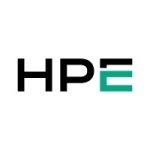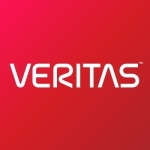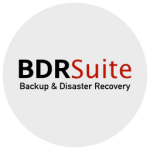What is our primary use case?
We are ensuring our data's safety by backing it up in both Acronis' cloud and on-premise servers. Additionally, we have established a partnership with Acronis to become resellers in the Jordanian market. This enables us to benefit from our partnership and offer Acronis products to customers.
Acronis Backup is of excellent quality, highly user-friendly, and supports nearly all platforms, databases, and hypervisors. Subscription options for both on-premise and cloud-based versions are available, with each providing varied options such as workload, gigabyte, and service provider.
How has it helped my organization?
Acronis natively integrates backup and cybersecurity, simplifying management and automation in one console, which helps us and our customers to keep our data secure and safe with a trustable solution like Acronis. A combination of high-performance computing, universal software-defined storage, and flexible networking allows us to grow the business without complexity concerns.
What is most valuable?
Since the last version, everything has been improved. Each update Acronis releases brings better performance, recovery, and backup. Acronis also fixed existing errors and added new compatibility. With every new version, the solution continues to get better and better.
The solution's software is highly secure, with an anti-Malware and anti-ransomware engine, plus additional features such as vulnerability assessment, remote management, and remote control. Malware scanning is integrated into the single agent for added convenience. All in all, this is an impressive product and I highly recommend it.
Acronis Backup is easy to use and we've had no issues with it in the years we've been using Acronis; the backups and recoveries are rock solid and it's great for transitioning between physical to physical, virtual to virtual, physical to virtual, and virtual to physical.
What needs improvement?
The pricing is significantly higher than it was last year, which is understandable since they have introduced new technology, such as transitioning from backup to cybersecurity. This has required a large investment in development, so it is reasonable for Acronis to raise the price. However, existing customers may be taken aback by the sudden price increase when they renew their accounts or licenses.
Talking about the Acronis Service Provider platform, I wish Acronis had a feature that would allow me to set an expiry date for created customers and issued licenses on both the "Per Workload" and "Per Gigabyte" options. This way, I could receive a reminder when a customer's subscription is about to expire without the need to integrate third-party tools. Unfortunately, this is not available in the service provider portal. This would be extremely helpful for service providers and should be included in the future.
Since Acronis stopped selling perpetual licenses, Acronis should take action to ensure that perpetual licenses are not functional if customers do not renew them. They should also strive to set reasonable renewal prices for perpetual licenses and create a mechanism to help us and customers who want to upgrade their licenses to subscription or service providers without being burdened with an exorbitant fee. It is clear that Acronis must review its pricing model and create a system that will make it easier for customers to upgrade without breaking the bank. We're losing customers due to the fact that there is a huge gap between renewing perpetual licenses and subscription licenses. On the other hand, perpetual licenses, which are valid for life, do not require renewal for the software to continue working. Therefore, customers may be hesitant to renew maintenance support for these licenses due to the higher cost even if they won't get any updates or support, but many of them still say that the software is stable enough for them and they don't need to renew. However, with a reasonable price, many customers are now renewing. With these significant price increases for their perpetual license renewal, I found it to be unreasonable. However, I have no issues with their subscription and service provider models. Acronis needs to find a way to address the price increases for their perpetual licenses.
For how long have I used the solution?
I have been using the solution for more than 10 years.
What do I think about the stability of the solution?
I have a lot of customers who never call me with complaints about Acronis. I proactively reach out and ask if they are having any issues with Acronis; they always tell me that the solution is very stable and that the installation, scheduling, and verification processes all work as expected. Acronis updates are solid and address compatibility issues and error correction.
What do I think about the scalability of the solution?
Acronis is a scalable solution, there are no worries about scalability. They always listen to thousands of customers of all sizes. A combination of high-performance computing, universal software-defined storage, and flexible networking allows you to grow the business without complexity concerns.
How are customer service and support?
The support and maintenance services at Acronis are the best I have ever encountered. When I open a support case or request maintenance, I hear back in two to three minutes, and for more major or critical matters, the response time is from three to seven days. Even when I reach out to Acronis by email, the staff is prompt to respond.
No matter who we are talking to, customers or competitors, we always offer advice on using Acronis. In my opinion, Acronis is the best software available on the market, better than other options such as Veeam Backup and Replication, Commvault Complete Data Protection, Symantec Online Backup, and Veritas NetBackup. We always suggest that customers use Acronis, and it is a reliable and solid option that we use ourselves in our company.
How would you rate customer service and support?
Which solution did I use previously and why did I switch?
I used many Backup solutions, but Acronis has an all-in-one solution that addresses security, simplicity, and stability for backup and recovery.
How was the initial setup?
Thanks to Acronis, setting it up is incredibly easy. Even for someone with no technical experience, it's a breeze. As a partner, when I introduce the product to customers, it only takes me an hour or two to explain how it works. Acronis has a user-friendly interface that can be operated in just a few steps.
The amount of time needed to deploy in larger environments typically takes up to five hours, depending on the number of users, machines, and servers involved. For example, it took less than five hours to deploy Acronis on 20 servers, 50 virtual machines, and 100 workstations using the tools provided by Acronis such as unattended installation and network Discovery.
I don't need many resources to install Acronis Backup. Generally, the basic requirements for either a server or PC are enough. Acronis covers almost all platforms so there are no special requirements. The amount of space needed for installation is also not excessive.
What about the implementation team?
We usually implement Acronis through our sales and technical teams, however; when the Acronis team is needed, they are experts and helpful.
What was our ROI?
For most companies, data is the most valuable asset: financial statements, customer databases, ERP systems, emails, etc. When planning for disasters, businesses must ask themselves several questions. “Should we protect our data?” “Can we rebuild without that data?” “How long do we have to rebuild before customers, suppliers, and investors go elsewhere?” The answer is Backup and Disaster Recovery. The best way is to demonstrate that disaster recovery is not with cost — but an investment with a positive ROI.
The math for the rate of return is a bit complicated.
What's my experience with pricing, setup cost, and licensing?
The pricing has increased, however, I believe it is still reasonable compared to other products. Acronis offers unique features that make it stand out from the competition. I see with Acronis, you will get what you paid for.
Acronis licensing module is very good and easy, you don't have to struggle choosing between licenses.
The setup is very simple, they avoid any setup complexity. One setup file will cover all your platforms.
Which other solutions did I evaluate?
I evaluated many solutions, Acronis is the best of them from my opinion.
What other advice do I have?
Acronis is not just a backup solution, it is truly a cybersecurity solution. In Addition, they have many other solutions such as:
Which deployment model are you using for this solution?
On-premises
Disclosure: My company has a business relationship with this vendor other than being a customer. Partner



















This review provides a detailed perspective on Acronis Cyber Protect, particularly its use for backing up OneDrive in Microsoft 365. It highlights the solution’s strengths, such as its user-friendly interface, while also pointing out areas for improvement, particularly around licensing complexity for SharePoint.
Acronis Cyber Protect is a strong solution for OneDrive backup in Microsoft 365, offering a user-friendly interface, quick setup, and reliable data recovery. However, its complex licensing model for SharePoint and scalability limitations for larger organizations are notable drawbacks. By addressing these issues, Acronis could strengthen its position in the competitive backup and recovery market.